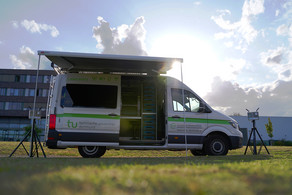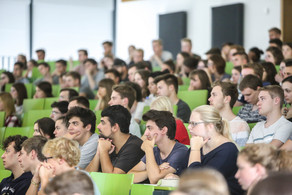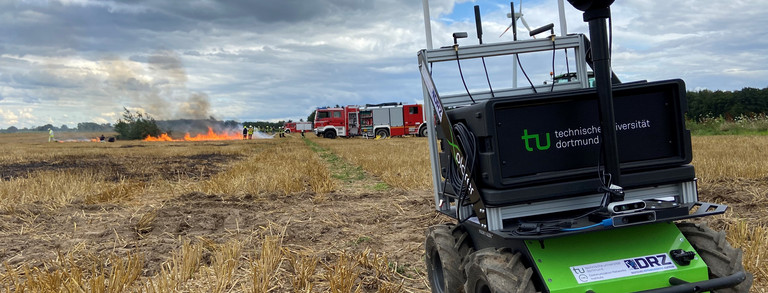Collaborative Research Center 876
The collaborative research center SFB876 brings together data mining and embedded systems. On the one hand, embedded systems can be further improved using machine learning. On the other hand, data mining algorithms can be realized in hardware, e.g. FPGAs, or run on GPGPUs. The restrictions of ubiquitous systems in computing power, memory, and energy demand new algorithms for known learning tasks. These resource bounded learning algorithms may also be applied on extremely large data bases on servers.
Project duration: 01.01.2015 - 31.12.2022

Project Composition of the SFB 876
The collaborative research center is divided into multiple projects. An extensive overview of all projects and their main objective can be found on the homepage of the SFB 876.
The Communication Networks Institute attends projects A4 and B4
News
CNI researchers receive Best Paper Award for new Open Source Network Simulator for Narrowband-Internet-of-Things (NB-IoT) Communications
We are pleased to announce our contribution “From LENA to LENA-NB: Implementation and Performance Evaluation of NB-IoT and Early Data Transmission in…
CNI congratulates Melina Geis, Tim Gebauer, and Cedrik Schüler for receiving prestigious awards for their master’s theses
We are very happy to announce that three of our previous students, who have all become researchers at the Communication Networks Institute, have…
Best Paper of the Best Paper Session @ 11th International Conference on Indoor Positioning and Indoor Navigation (IPIN) 2021
We are delighted to announce that the contribution “Accurate Multi-Zone UWB TDOA Localization utilizing Cascaded Wireless Clock Synchronization” by…
Release of Book on "Machine Learning for Future Wireless Communications"
We are pleased to annouce that the print version of the novel Wiley/IEEE Press book "Machine Learning for Future Wireless Communications" has been…
Best Paper Award at prestigious IEEE Conference
We are very happy to announce that a joint work developed within the DFG SFB 876 between machine-learning (Nico Piatkowski from the Computer Science…
CNI contribution to the 2nd 6G Wireless Summit
We are very pleased to announce that our paper "Towards cooperative data rate prediction for future mobile and vehicular 6G networks" has been…
Publications
High-Precision Wireless Localization
J. Tiemann
In Volume 3 Machine Learning under Resource Constraints - Applications, De Gruyter, December 2022.
Energy Awareness
N. Piatkowski, R. Falkenberg
Volume 1 Machine Learning under Resource Constraints - Fundamentals, De Gruyter, December 2022.
Mobile-Data Network Analytics Highly Reliable Networks
R. Falkenberg, K. Heimann, B. Sliwa
In Volume 3 Machine Learning under Resource Constraints - Applications, De Gruyter, December 2022.
Machine Learning-Enabled 5G Network Slicing
C. Bektas, F. Kurtz, D. Overbeck, C. Wietfeld
In Volume 3 Machine Learning under Resource Constraints - Applications, De Gruyter, December 2022.
Resource-Efficient Vehicle-to-Cloud Communications
B. Sliwa
In Volume 3 Machine Learning under Resource Constraints - Applications, De Gruyter, December 2022.
Capacity Analysis of IoT Networks in the Unlicensed Spectrum
S. Böcker, C. Arendt, C. Wietfeld
In Volume 3 Machine Learning under Resource Constraints - Applications, De Gruyter, December 2022.
Privacy-Preserving Detection of Persons and Classification of Vehicle Flows
M. Haferkamp, B. Sliwa, C. Wietfeld
In Volume 3 Machine Learning under Resource Constraints - Applications, De Gruyter, December 2022.
Green Networking and Resource Constrained Clients for Smart Cities
P. Jörke, C. Wietfeld
In Volume 3 Machine Learning under Resource Constraints - Applications, De Gruyter, December 2022.
Vehicle to Vehicle Communications: Machine Learning-Enabled Predictive Routing
C. Krieger, B. Sliwa, C. Wietfeld
In Volume 3 Machine Learning under Resource Constraints - Applications, De Gruyter, December 2022.





